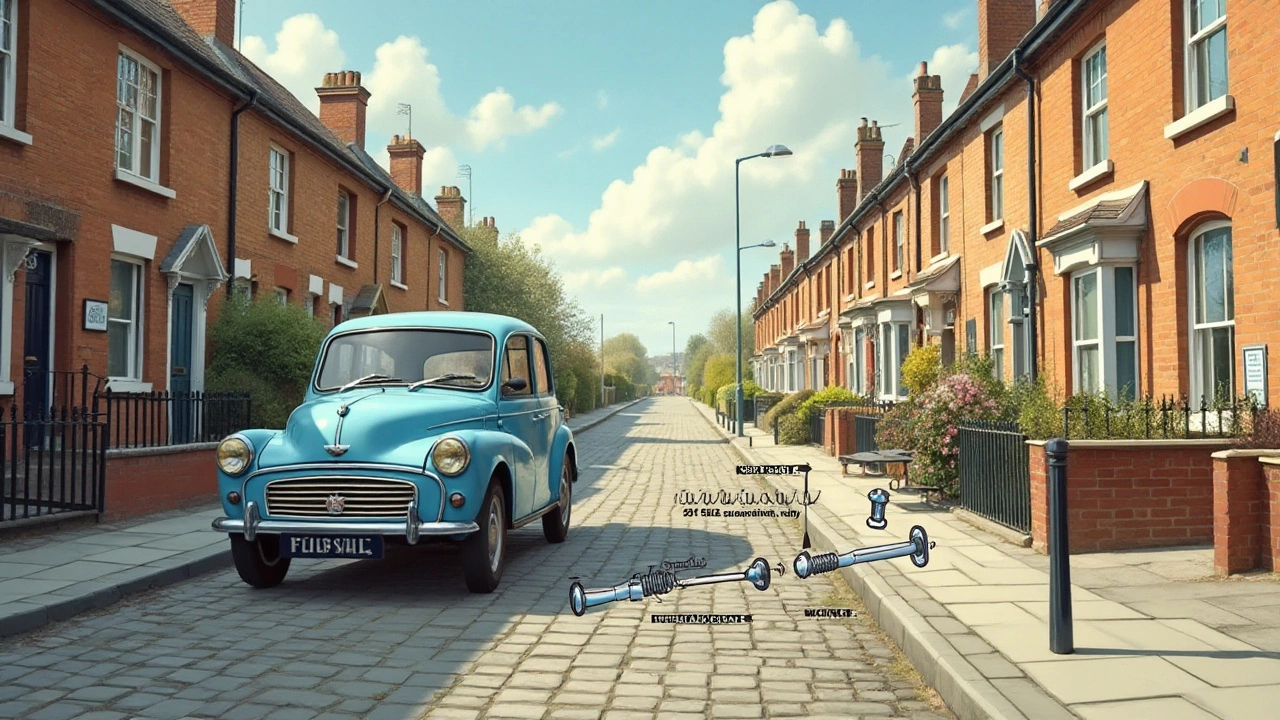Suspension Troubleshooting Guide
When dealing with Suspension troubleshooting, the systematic process of finding and fixing problems in a car's suspension system. Also known as suspension diagnosis, it helps keep your ride smooth, safe, and comfortable.
Suspension troubleshooting starts with listening. A clunk when you hit a bump or a squeak during cornering often signals something is out of place. This is where Suspension noise, any unusual rattling, clunking or squeaking coming from the suspension components becomes your first clue. Different sounds point to different parts: a deep thump usually means a worn shock absorber, while a high‑pitched squeal can indicate a failing bushing.
Key Areas to Check
Next, examine the Shock absorbers, hydraulic devices that control spring movement and dampen road impacts. Effective suspension troubleshooting requires inspecting these for leaks, broken mounts, or loss of bounce. If the vehicle bounces more than usual after hitting a curb, the shock absorber is likely compromised. Remember, the condition of shock absorbers directly influences ride comfort and tire wear.
While you’re at it, don’t forget the Struts, structural components that combine a shock absorber with a coil spring to support the vehicle's weight. Struts affect both handling and alignment. A failing strut often causes uneven tire wear and a feeling of looseness during turns. Checking for oil stains on the strut housing or a noticeable sag in the rear of the car can quickly confirm a problem.
Beyond individual parts, look at overall Vehicle handling, how the car responds to steering inputs, braking and road irregularities. If the car pulls to one side, feels unstable, or the driver feels excessive body roll, the suspension geometry might be off. Alignment, worn bushings, or damaged control arms often show up here. This relationship—worn struts influencing vehicle handling—is a classic example of how one component can affect the whole system.
Tools make the job easier. A basic jack and jack stands let you lift the car safely, while a coil spring compressor helps you remove struts without damage. A pry bar can test for excessive play in ball joints, and a rubber mallet can knock loose stubborn bolts. Having these tools on hand speeds up the diagnostic loop and reduces guesswork.
Once you’ve isolated the culprit, decide whether to repair or replace. Minor issues like worn bushings often just need a simple swap, whereas cracked shock absorbers or broken struts usually require full replacement for long‑term reliability. Remember, mixing old and new components can lead to uneven wear, so it’s best to replace in pairs (front or rear) whenever possible.
Now that you know what to listen for, which parts to inspect, and how each component ties into overall ride quality, you’re ready to dive deeper. Below you’ll find a curated set of articles that walk you through specific symptoms, step‑by‑step diagnostics, and cost‑effective solutions for common suspension problems.

Front Suspension Bad? How to Spot the Early Signs
Jun 2 2025 / Suspension PartsThis article breaks down the real-life signs that your front suspension might be failing and what these symptoms can mean for your ride. You'll learn how to check for issues yourself, which noises and sensations to watch out for, and why ignoring these clues could cost you big time. No jargon—just clear advice to help you keep your car safe and steering smooth. From clunks to weird tire wear, find out what's really happening under your hood. You'll even get tips for a quick driveway check before calling in the pros.
VIEW MORE
Detecting Noises from Bad Suspension While Driving
Feb 3 2025 / AutomotiveDriving with a bad suspension can lead to various noises that indicate underlying issues. From clunking sounds to squeaks, these noises help in identifying the problematic components. Understanding these noises can assist drivers in deciding when to seek professional help. Regular maintenance can prevent these issues from becoming severe and ensure a smoother ride.
VIEW MORE